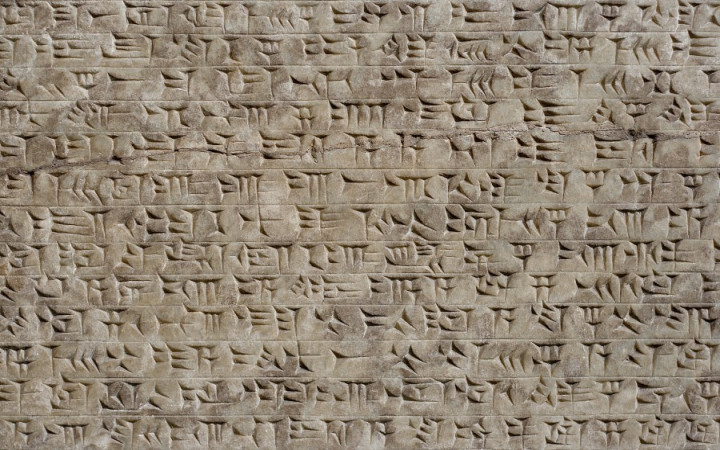Cuneiform Was A Writing System Developed By The

SOCIAL STUDIES — History
Have You Ever Wondered...
- Who invented cuneiform?
- What drove the development of the earliest writing systems?
- Where was cuneiform developed?
Do you remember back when you first learned your ABCs? You probably sang a little tune to help you memorize the order of the letters. Once you had them down pat, you then started on the adventure of writing those letters for yourself and eventually combining them together into all sorts of words.
For many, writing is a form of self-expression better than any other. With the written word, you can create imaginative stories or even share your innermost feelings in ways that you might not feel comfortable vocalizing.
The same was true for ancient peoples thousands and thousands of years ago. The urge and need to communicate with others in writing, to leave behind your thoughts, hopes, and dreams in a way more permanent than spoken words, have existed since people first walked on Earth.
Of course, way back when, letters didn't look exactly like they do today. If you've ever seen any archeological finds in a museum, you know that much early writing took the form of pictures and symbols. Before letters were invented, the easiest way to communicate thoughts in writing was to use symbols and pictures that visually represented the things they were about.
One of the earliest known writing systems is known as cuneiform script. The name cuneiform comes from the Latin words cuneus and forma, which mean "wedge" and "shape," respectively. Cuneiform can thus be thought of as wedge-shaped script.
Cuneiform was first developed by the ancient Sumerians of Mesopotamia around 3,500 B.C. The first cuneiform writings were pictographs created by making wedge-shaped marks on clay tablets with blunt reeds used as a stylus.
Cuneiform isn't a single writing system, however. The term actually encompasses several different kinds of writing systems that developed over time, all of which consisted of individual signs made up of wedge shapes.
Over time, pictographs gave way to syllabic and alphabetic signs. Cuneiform as created by the Sumerians adapted and evolved through the writings of many other peoples, including the Akkadians, Babylonians, Hittites, Assyrians, and Hurrians. Cuneiform inspired the Old Persian alphabet, but was eventually replaced by the Phoenician alphabet.
By 1,000 A.D., cuneiform had become extinct. No one knew how to read it. It was essentially a lost writing system until researchers began to decipher it in the 19th century. In fact, the great literary works of Mesopotamia, such as The Epic of Gilgamesh, were written in cuneiform but remained unknown until they were deciphered and translated into English in the mid-1800s.
Perhaps you could be the next great cuneiformist! Today, there are only a few hundred qualified cuneiformists in the world. This explains why only a fraction of the approximately two million cuneiform tablets that have been excavated have ever been deciphered and translated. Who knows what ancient stories are out there still to be told?
Wonder What's Next?
Tomorrow's Wonder of the Day is starting to smell a bit funky!
Try It Out
Wasn't it fun to learn all about cuneiform today in Wonderopolis? Grab a couple friends and family members and ask them to help you have even more fun with the following activities:
- Can you Write Like a Babylonian? Jump online, enter your name and initials, and see how an ancient Babylonian might have written your monogram. Share this link with your friends and family members. Have them try it out. Compare monograms. Which one is your favorite? Why?
- Could cuneiform be used for early mathematics? Yes, it could and was! For a closer look at ancient mathematics, jump online and check out Babylonian Numeration System. For fun, ask a friend or family member to give you three numbers. Try to convert each into Babylonian numbers. Check your work online. What do you think? Is our modern mathematics system harder or easier than Babylonian math? Why?
- Up for a challenge? Develop your own writing system! Sure, you already have a written language, but why not exercise your creative muscle and make up your very own? Pretend you're a prehistoric human. What symbols might you come up with to convey basic messages to other prehistoric humans? Use what you've learned about the history of cuneiform to come up with your own unique version of symbolic writing. Share it with a friend or family member by giving them a message written in your new language. Give them your key and see if they can decipher your message!
Did you get it?
Test your knowledge
Related Wonders for You to Explore


Quit Select a Word
Quit
Drag a word to its definition
Word Match
Select a Wonder Word:
shape
pictograph
script
extinct
clay
alphabetic
fraction
wedge
reed
deciphered
Word Match
Congratulations!
You've matched all of the definitions correctly.
Exit
Quiz Results
Not Bad
You have answered 0 of 3 questions correctly and your score is:
Share Results
Cuneiform Was A Writing System Developed By The
Source: https://wonderopolis.org/wonder/who-invented-cuneiform
Posted by: bouchertwor1982.blogspot.com

0 Response to "Cuneiform Was A Writing System Developed By The"
Post a Comment